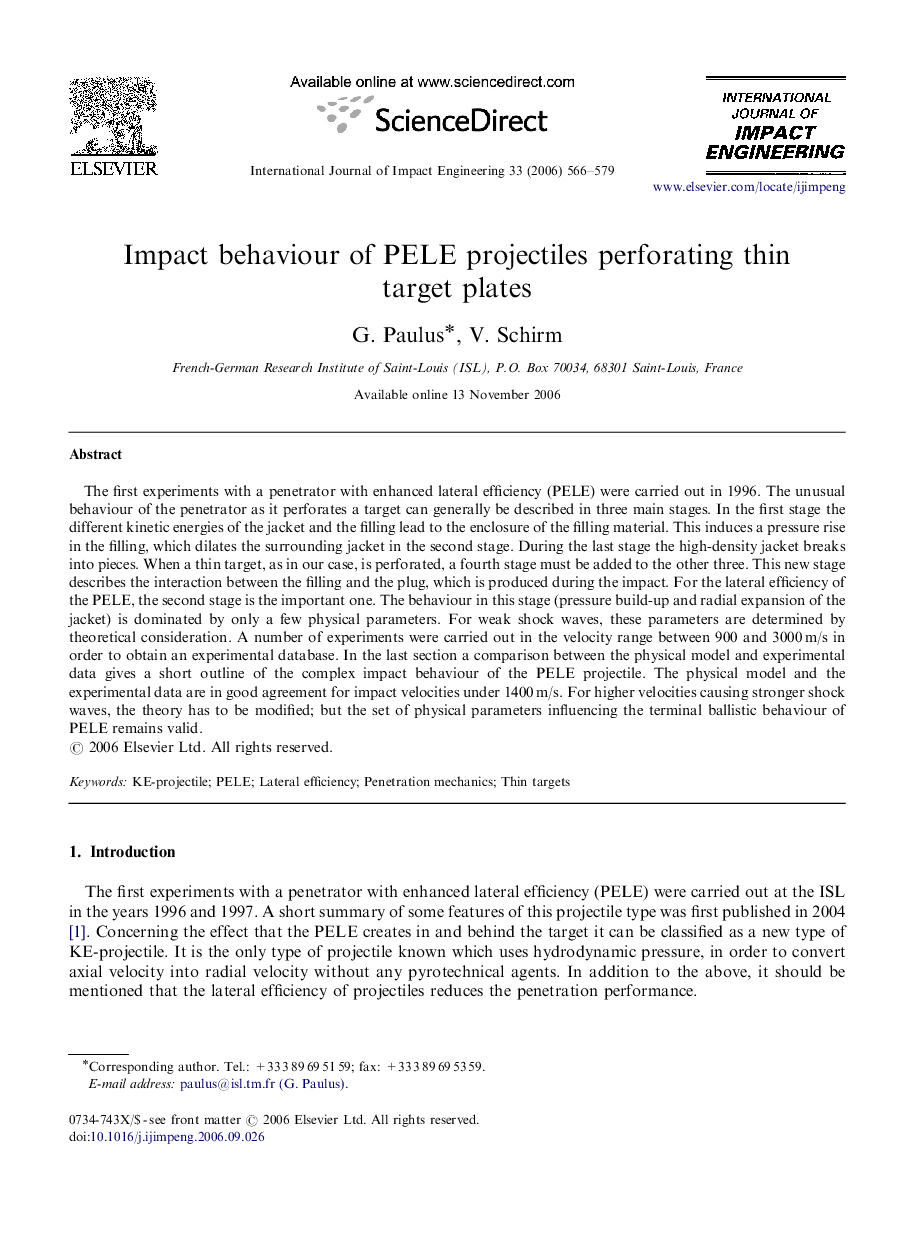| کد مقاله | کد نشریه | سال انتشار | مقاله انگلیسی | نسخه تمام متن |
|---|---|---|---|---|
| 779624 | 1464169 | 2006 | 14 صفحه PDF | دانلود رایگان |

The first experiments with a penetrator with enhanced lateral efficiency (PELE) were carried out in 1996. The unusual behaviour of the penetrator as it perforates a target can generally be described in three main stages. In the first stage the different kinetic energies of the jacket and the filling lead to the enclosure of the filling material. This induces a pressure rise in the filling, which dilates the surrounding jacket in the second stage. During the last stage the high-density jacket breaks into pieces. When a thin target, as in our case, is perforated, a fourth stage must be added to the other three. This new stage describes the interaction between the filling and the plug, which is produced during the impact. For the lateral efficiency of the PELE, the second stage is the important one. The behaviour in this stage (pressure build-up and radial expansion of the jacket) is dominated by only a few physical parameters. For weak shock waves, these parameters are determined by theoretical consideration. A number of experiments were carried out in the velocity range between 900 and 3000 m/s in order to obtain an experimental database. In the last section a comparison between the physical model and experimental data gives a short outline of the complex impact behaviour of the PELE projectile. The physical model and the experimental data are in good agreement for impact velocities under 1400 m/s. For higher velocities causing stronger shock waves, the theory has to be modified; but the set of physical parameters influencing the terminal ballistic behaviour of PELE remains valid.
Journal: International Journal of Impact Engineering - Volume 33, Issues 1–12, December 2006, Pages 566–579